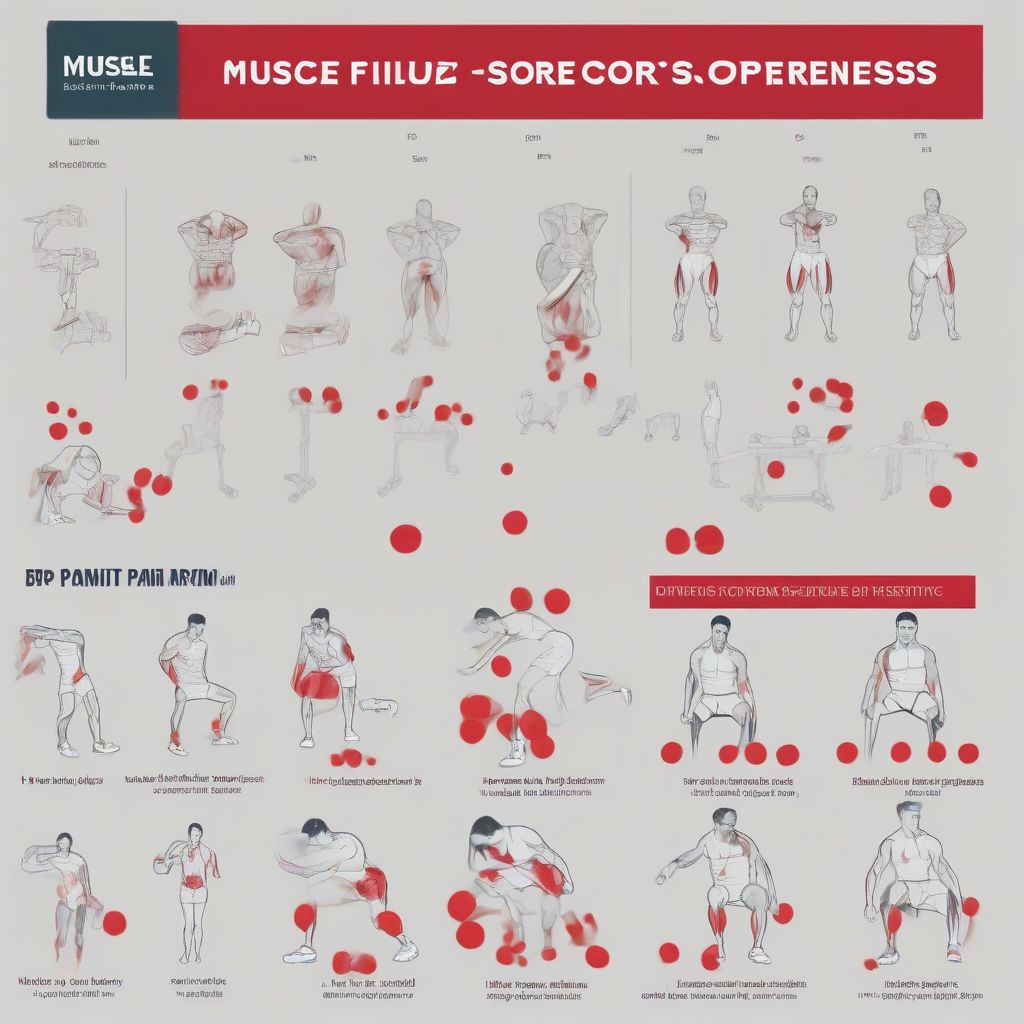We’ve all been there. You’re feeling great, pushing yourself in a workout, and then bam – you feel a twinge, a pull, or a sharp pain. Ignoring these early signs of injury can lead to more severe problems down the line. As a nutritionist and meal prep coach, I often emphasize the importance of a holistic approach to health, and that includes listening to your body and addressing potential injuries proactively.
So how can you tell the difference between post-workout soreness and something more serious? And what steps should you take to promote healing and prevent further damage? Let’s break it down.
Recognizing the Whispers: Identifying Early Injury Signs
Our bodies are incredibly intuitive. Pain, no matter how subtle, is your body’s way of telling you something isn’t right. Learning to differentiate between typical workout soreness and potential injury indicators is key.
Common Early Warning Signs:
- Pain: This may present as a sharp, stabbing sensation, a dull ache, or a lingering throb.
- Swelling: Inflammation is your body’s natural response to injury. Noticeable swelling around a joint or muscle is a red flag.
- Redness and Warmth: Increased blood flow to an injured area can cause the skin to appear red and feel warm to the touch.
- Stiffness and Reduced Range of Motion: Do you struggle to move a joint through its full range of motion? This could be an early sign of injury.
- Weakness: Feeling like you’ve lost strength in a particular muscle or muscle group? This could indicate an underlying issue.
 Muscle Soreness vs. Injury
Muscle Soreness vs. Injury
Don’t Silence the Alarm: Addressing Early Signs
The worst thing you can do when you suspect an injury is to ignore it. Early intervention is crucial to prevent further damage and promote healing. Remember, what may seem like a minor niggle today could turn into a chronic issue tomorrow.
The RICE Protocol – Your First Line of Defense:
The RICE protocol is a tried-and-true method for managing acute injuries. Here’s how to apply it:
- Rest: Avoid activities that stress the injured area. This might mean modifying your workouts or taking a complete break.
- Ice: Apply ice packs for 15-20 minutes at a time, several times a day. Ice helps reduce swelling and numbs the pain.
- Compression: Use a compression bandage to help reduce swelling. Make sure it’s snug but not too tight.
- Elevation: Keep the injured area elevated above your heart whenever possible. This will also help minimize swelling.
Beyond RICE: Additional Strategies for Recovery
- Over-the-Counter Pain Relief: Nonsteroidal anti-inflammatory drugs (NSAIDs) like ibuprofen or naproxen can help reduce pain and inflammation. However, always consult with your doctor before taking any medication.
- Gentle Movement: While rest is important, gentle movement can actually aid in healing. Think light stretches or range-of-motion exercises.
- Listen to Your Body: This is paramount. Don’t push through pain. Gradually increase activity levels as your body heals.
- Seek Professional Help: If your pain is severe, doesn’t improve after a few days of home care, or if you have any concerns, consult a doctor or physical therapist.
Prevention is Key: Minimizing Injury Risk
While some injuries are unavoidable, there are steps you can take to significantly reduce your risk.
- Warm Up Properly: Never skip your warm-up! Prepare your body for exercise with dynamic stretches that increase blood flow to the muscles and increase your range of motion.
- Use Proper Form: Whether you’re lifting weights, running, or practicing yoga, correct technique is essential. If you’re unsure about your form, ask a qualified trainer for guidance.
- Listen to Your Body, Rest, and Recover: Pushing yourself is good, but overtraining is a recipe for disaster. Listen to your body’s cues and incorporate rest days into your routine. Prioritize sleep, hydration, and proper nutrition to support muscle recovery.
- Gradual Progression: Avoid doing too much too soon. Gradually increase the intensity, duration, and frequency of your workouts.
 Stretching Before Workout
Stretching Before Workout
[amazon bestseller=”foam roller”]
Your Journey to a Resilient You
Remember, taking care of your body is a lifelong commitment. By learning to recognize and address early signs of injury, you’re not just treating symptoms, you’re investing in your long-term health and well-being. Move mindfully, listen to your body, and don’t hesitate to seek professional guidance when needed. You’ve got this!
Do you have any tried-and-true methods for preventing or managing injuries? Share your tips in the comments below!
